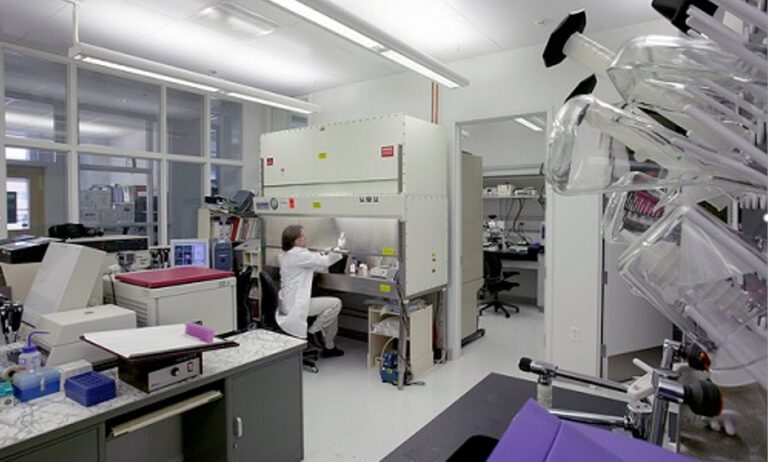Perspectives
What does it take to bring a drug to market – in time and money?
December 14, 2017For most drugs, it takes an average of 12 years from lab to medicine cabinet.¹
FDA Approval Process¹

The passing lane
The FDA has programs that allow for expedited reviews:
- Accelerated
- Priority
- Fast track
- Breakthrough therapy
Each of these programs has its own way to speed the process along, targeting different parts of the review process. Cancer drugs dominate all four categories of expedited reviews.²
The price tag: a tale of two perspectives
On one hand… A recent market analysis, funded by drug manufacturers, estimates that it takes $2.9 billion to bring a new drug to market.³ This includes:
- Average out-of-pocket costs
- Time costs
- Expected returns that investors forego while a drug is in development
- Post approval research and development (R&D) costs
This is twice what it cost 10 years ago in a study by the same organization. However, many have questioned the accuracy of this study.4-7
On the other hand… Two cancer doctors looked at 10 companies and 10 cancer drugs. They came up with a much smaller number: They estimate it takes a drug manufacturer only $650 million to develop a drug to market.4 Their research included:
- The company’s R&D costs as reported to the Securities and Exchange Commission (SEC)
- The product’s earnings (seven times the revenue it cost in R&D)
- Continued earnings from the product was assumed but not added in

That’s quite a difference.
How long? An average of 12 years. If a drug gets into one of the FDA’s four expedited channels, it can shorten the FDA review process by a few years. Plus, the FDA fast tracking often involves consultation on the clinical trials which can streamline development, risk assessment, test parameters and timing. The expedited designation may even defer some clinical trials until after market launch.
How much? $650 million to $2.9 billion; depending on who’s doing the counting and what’s being counted.4-7
Drug prices are one of the largest problems confronting our U.S. health care system. The efforts of pharmacy benefit managers and drug cost management strategies have had recent success in keeping drug trend out of double digits. But, high-cost drugs and drug price inflation create tremendous pressure on the health care system.
And don’t forget about the new six-figure gene therapy treatments. It looks like our health care system could use a boost in its immune system. We recommend Prime’s integrated model for a clear view of total cost of care.
References
- “Drug Approvals – From Invention to Market…12 Years!” MedicineNet.com. Accessed at: www.medicinenet.com/script/main/art.asp?articlekey=9877
- “FDA Expedited Review Programs,” Friends of cancer Research. © Copyright 2017 Friends of Cancer Research. Accessed at: https://www.focr.org/fda-expedited-review-programs.
- “Tufts CSDD Assessment of Cost to Develop and Win Marketing Approval for a New Drug Now Published,” March 10, 2016. Tufts Center for the Study of Drug Development. Copyright ©2017. Accessed at: http://csdd.tufts.edu/news/complete_story/tufts_csdd_rd_cost_study_now_published
- “R&D Costs For Cancer Drugs Are Likely Much Less Than Industry Claims, Study Finds,” by Richard Harris. As heard on National Public Radio’s All Things Considered, September 11, 2017.Health News from NPR. © 2017 npr. Accessed at: http://www.npr.org/sections/health-shots/2017/09/11/550135932/r-d-costs-for-cancer-drugs-are-likely-much-less-than-industry-claims-study-finds
- “Studies fuel criticism of high drug development costs,” by Clive Cookson. April 6, 2015. Financial Times. The Financial Times LTD 2017. Accessed at: https://www.ft.com/content/6a57fcd4-bdcd-11e4-8cf3-00144feab7de
- “The $2.5 billion mistake: Agullible Trump bought into Big Pharma’s inflated claim about R&D costs,” byMichael Hiltzikl. Jan. 31, 2017. LA Times. Accessed at: http://www.latimes.com/business/hiltzik/la-fi-hiltzik-trump-pharma-20170131-story.html
- “High Drug Prices Prompt Demands for Transparency,” by Michael Oilove. March 7, 2016. The Pew Charitable Trusts. Copyright © 1996-2017 The Pew Charitable Trusts. Accessed at: http://www.pewtrusts.org/en/research-and-analysis/blogs/stateline/2016/03/07/high-drug-prices-prompt-demands-for-transparency
Lab image: courtesy of U.S. Food & Drug Administration
Related news
Perspectives
July 25, 2024
Quarterly Drug Pipeline: July 2024
Clinical insights and competitive intelligence on anticipated drugs in development
Perspectives
July 22, 2024
Oncology Insights: 2024 ASCO Annual Meeting key findings
Findings from this year’s American Society of Clinical Oncology (ASCO) Annual Meeting will likely lead to clinical practice changes and U.S. Food and Drug Administration (FDA) drug approvals or expansions
Perspectives
July 16, 2024
LISTEN NOW: Beyond the business – Stories of corporate kindness | Pharmacy Friends Podcast
In this episode, we talk about how our employees' help goes beyond our work in health care, aiding in philanthropic efforts